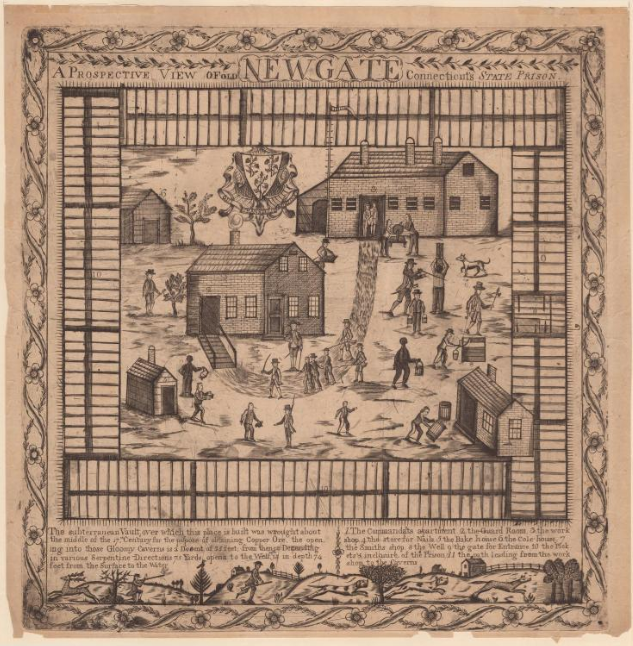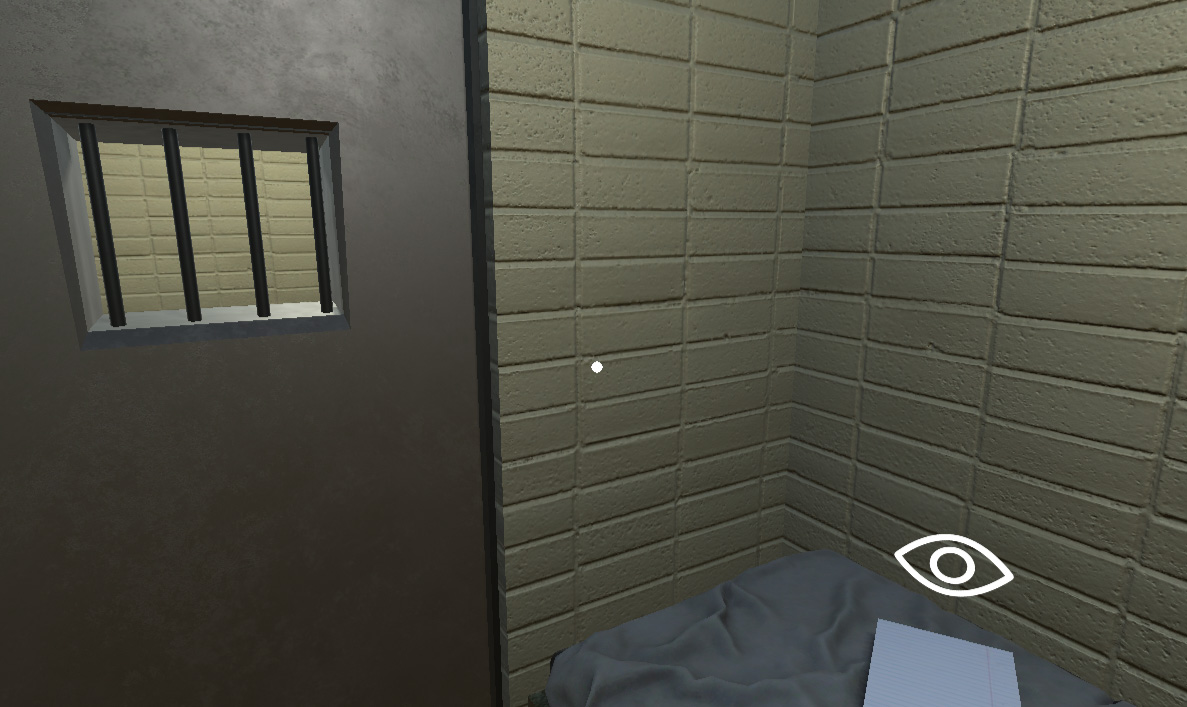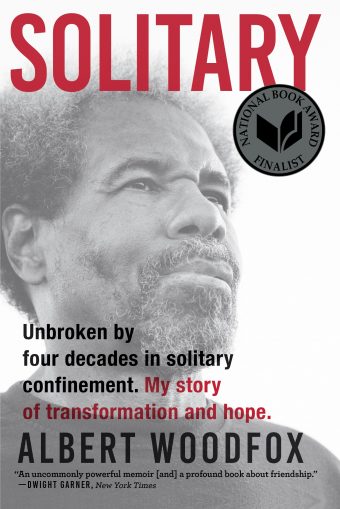Amy Hufnagel
Director of Programs & Visitor Experience
Harriet Beecher Stowe Center
TEACHER'S SNAPSHOT
Subjects:
African Americans, Crime & Punishment, Race, Social Justice
Course Topics/Big Ideas:
Rights and Responsibilities of Citizens, The Struggle for Freedom, Equality, and Social Justice
Town:
East Granby, Hartford, Simsbury
Grade:
High School
Lesson Plan Notes
In 2021, the use of solitary confinement in Connecticut prisons was an issue debated publicly and on the floors of the General Assembly. Why is this issue at the forefront of prison reform, and how does it link to the history of the United States penal and criminal system? Students will examine historical sources related to prison history in Connecticut, read an age-appropriate article about solitary confinement, and experience a multi-media work of art based on Albert Woodfox’s book Solitary to explore the topics of criminal and social justice and consider the meaning and interpretation of the Eight Amendment to the United States Constitution, which states “Excessive bail shall not be required, nor excessive fines imposed, nor cruel and unusual punishments inflicted.”
ESSENTIAL QUESTION
SUPPORTING QUESTIONS
- What kinds of criminal punishment have been used throughout history in the United States?
- What factors contribute to the interpretation of what is “cruel and unusual punishment”?
- How has the interpretation of “cruel and unusual punishment” changed over time?
- Why would the prison system want to do something to a prisoner to break their spirit?
- Why are prisons and policing considered by many to be the centerpiece of systemic racism in the United States?
ACTIVITY
- Start by having students read the Eight Amendment to the United States Constitution and discuss what they think the final phrase (“cruel and unusual punishment”) means. Introduce the compelling question.
- Students will develop supporting questions to guide the inquiry. You may also want to introduce the suggested supporting questions.
- Students will start by reading the historic document from Newgate Prison (both the original document and a transcription are provided in the toolkit) and examining the engraved picture of Newgate made around 1799. What information is presented? Who do they think the document was created by and for whom? What do they think about what they read? What do they see in the image? What questions do they have? You may want to use the Library of Congress Primary Source Analysis Tool worksheet to help students collect their observations and thoughts.
- Next, students will read the “What It Feels Like to Be a Teen in Solitary Confinement” article and explore the Solitary VR experience (or read the excerpt from Woodfox’s book, if you cannot access the VR experience.) Students will reflect on both sources and discuss their reactions and new questions that have emerged.
- In pairs, small groups, or as a class, students will discuss how the sources connect and what they find to be the most striking or memorable aspect of each. What are three new things that they learned about the criminal justice system or the experience of incarceration?
- Revisit the supporting and compelling questions and discuss where students can find out more about the history of incarceration and prison reform in the United States, from the early Republic up to today.
OPPORTUNITIES FOR ASSESSMENT
- Students will conduct additional research into youth in the criminal justice system and will present their findings using charts, tables, or infographics.
- Students will reflect in writing on the ways in which race factors into youth detainment in the United States.
- Students will do additional research into the efforts to stop the use of solitary confinement in Connecticut (see additional resources section below) and will create a poster or PSA video advocating for positive change.
- Using words and images, students will create an original work of art reflecting their feelings about this topic.
- Students will write an art review of Solitary VR in which they share what they think is effective, powerful, or convincing about the piece and what is not.
RESOURCE TOOL KIT

Newgate Prison Questions and Answers, c. 1810-13. Kingsbury Collection, Harriet Beecher Stowe Center.

A Prospective View of Old Newgate, Connecticut’s State Prison. Richard Brunton, c. 1799. Connecticut Museum of Culture and History, 1859.3.0.
Richard Brunton was an established artist, but this engraving was probably created during the two years (1799-1801) that he was incarcerated at Newgate Prison for counterfeiting money.
“What It Feels Like to Be a Teen in Solitary Confinement.” By Jennifer Gerson Uffalussy. Teen Vogue, November 8, 2017.

Solitary VR: A multi-media, sensory, digital work of art designed by Mackenzie Fox (UCONN Digital Humanities Lab to “bring Woodfox’s words off the page” and give audiences a look into Albert Woodfox’s book Solitary (Stowe Prize Winner 2020).
Instructions for how to use the Solitary VR technology:
- This VR is designed for PC computers and does not work on Mac based systems.
- This VR is navigated either by a computer mouse or by eye gaze.
- To activate with a computer mouse, move the cursor so you line up the circle and the dot on the screen. Left click.
- Read text, move cursor away from text, then back to text again, read, then left click. This will enter you into the environment.
- You interact with the content inside the solitary cell by clicking on the circle dots and moving the cursor right/left, up/down.
- There is an audio component, so be sure speakers are activated.
- To exit the software, hit the escape button.

Excerpt from Solitary by Albert Woodfox, pages 175-176. Grove Atlantic, 2019. Reproduced with permission.
ADDITIONAL RESOURCES
Places to GO
Old New-Gate Prison & Copper Mine, East Granby
Things To DO
Watch Worst of the Worst, a documentary created by Yale Law School’s Visual Law Project that paints a vivid and disturbing picture of solitary confinement in Connecticut state prisons. The movie includes narratives from people who have experienced the devastating impact of solitary, correctional officers, and human rights advocates. 31 minutes.
Experience the 3-D virtual tour of the Old New-Gate Prison & Cooper Mine.
Websites to VISIT
Articles to READ
“Voices from Solitary: A Day in the Life, Part I.” Solitary Watch, February 18, 2014
“Alone, in ‘the hole’: Psychologists probe the mental health effects of solitary confinement.” By Kirsten Weir. Monitor on Psychology, May 2012, Vol. 43, No. 5. American Psychological Association.
“Solitary Confinement and Mental Illness in U.S. Prisons: A Challenge for Medical Ethics.” Jeffrey L. Metzner and Jamie Fellner. Journal of the American Academy of Psychiatry and the Law Online, March 2010, 38 (1) 104-108.
“Solitary Increased by 500% During Pandemic.” By Andrea Cipriano. The Crime Report, October 6, 2021. Center on Media, Crime and Justice at the John Jay College of Criminal Justice in New York.
ConnecticutHistory.org:



